Eco Chic: Beauty Beneath the Skin (of your house)
One of our on-going themes here at 3rings is that of the re-claimed, re-purposed, re-cycled (choose your “re”) product. More and more, designers are discovering that, not only is there a burgeoning and enthusiastic market for this species of green product, but also that the constraint is frequently an excellent conduit to true innovation. Take Counter Evolution’s The Brooklyn, for instance, a table that combines a sustainable ethos with the nostalgia of a great American pastime.
Double Chair, #1. Designed by Chris Rucker of ruckercorp.
Or the Il Sole Conference Table by Giancarlo de Astis, a piece that incorporates cast-off parts from WWII era warplanes. Of course, the exemplar non-pareil of re-fashioning “junk” into high design is Frank Gehry, whose Wiggle Chair was constructed entirely of corrugated cardboard. Well, a new protege of these denizens of detritus has emerged from the great borough of Brooklyn. His name is Chris Rucker, and his material is none other than the pervasive OSB.
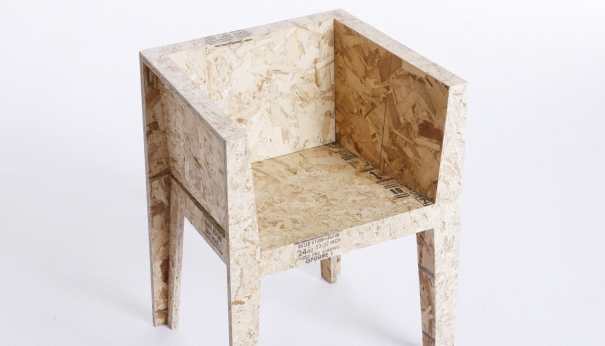
Armchair. Designed by Chris Rucker of ruckercorp.
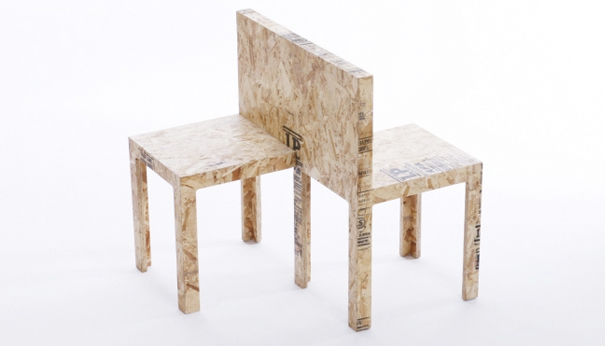
Double Chair, #2. Designed by Chris Rucker of ruckercorp.
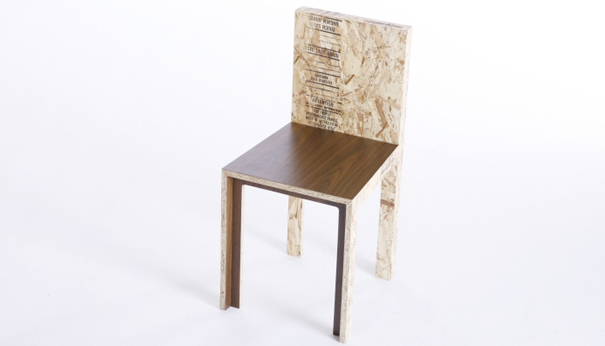
Dining Chair. Designed by Chris Rucker of ruckercorp.
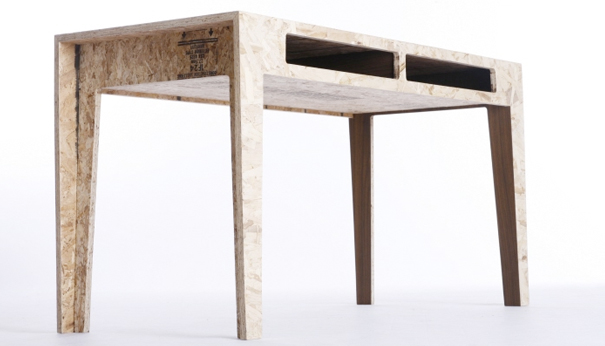
Strandboard Writing Desk. Designed by Chris Rucker of ruckercorp.
The acronym stands for “Oriented Strand Board,” and it’s essentially a sub-species of plywood. In contrast to the “original” form of laminated sheathing, CDX (which is made of glued layers of whole wood laminates), OSB is made of perpendicularly-oriented wood chips. It’s cheaper than CDX–and most tests say it’s just as strong–so it’s become the product of choice for wall and roof sheathing and sub-floors. Noticing the frequency with which OSB seems to show up as junk, Rucker became intrigued with its design potential: “I developed a fascination with distressed materials surveying furniture abandoned curbside near my studio in Brooklyn. The swollen pressboard and peeling laminate spoke a language of everyday use, disposable fabrication methods, and cheap material slavishly imitating fine furnishings… The revealed fakery inspired me to consider alternative materials. I tested the physical limitations of strand board, a cheap construction sheathing, solving difficult problems of fabrication and design while working to expose the material itself as a major component of the work’s aesthetic.”
The result is an aesthetically arresting portfolio of pieces that engages and challenges the paradigm of the throw-away culture. In the tradition of Warhol and Duchamp, Rucker’s collection of desks, tables, chairs, and bookcases re-contextualizes “found” items in a way that jolts us from our habitual associations and forces us to consider “trash” as functional furniture with a decidedly artistic bent. Rucker’s pieces don’t depend exclusively on OSB–he also integrates plastic laminates and junked foam pads–but the look of the pieces is highly invested in the inter-woven puzzle piece aesthetic of strand board. Some pieces downplay the OSB–the “Dining Table” and “Desk Chair” emphasize the ebony and walnut-tones of re-claimed plastic laminate–while others like the “Low Lounge” “are a damn-the-torpedoes, no-holds-barred celebration of this most mundane of materials. Kudos to Rucker for investing in a re-usable material, for undertaking the admirable task of turning trash into treasure.

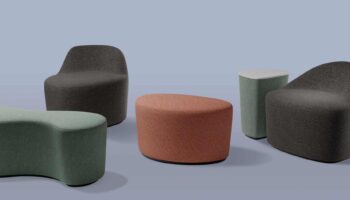


Leave a Reply